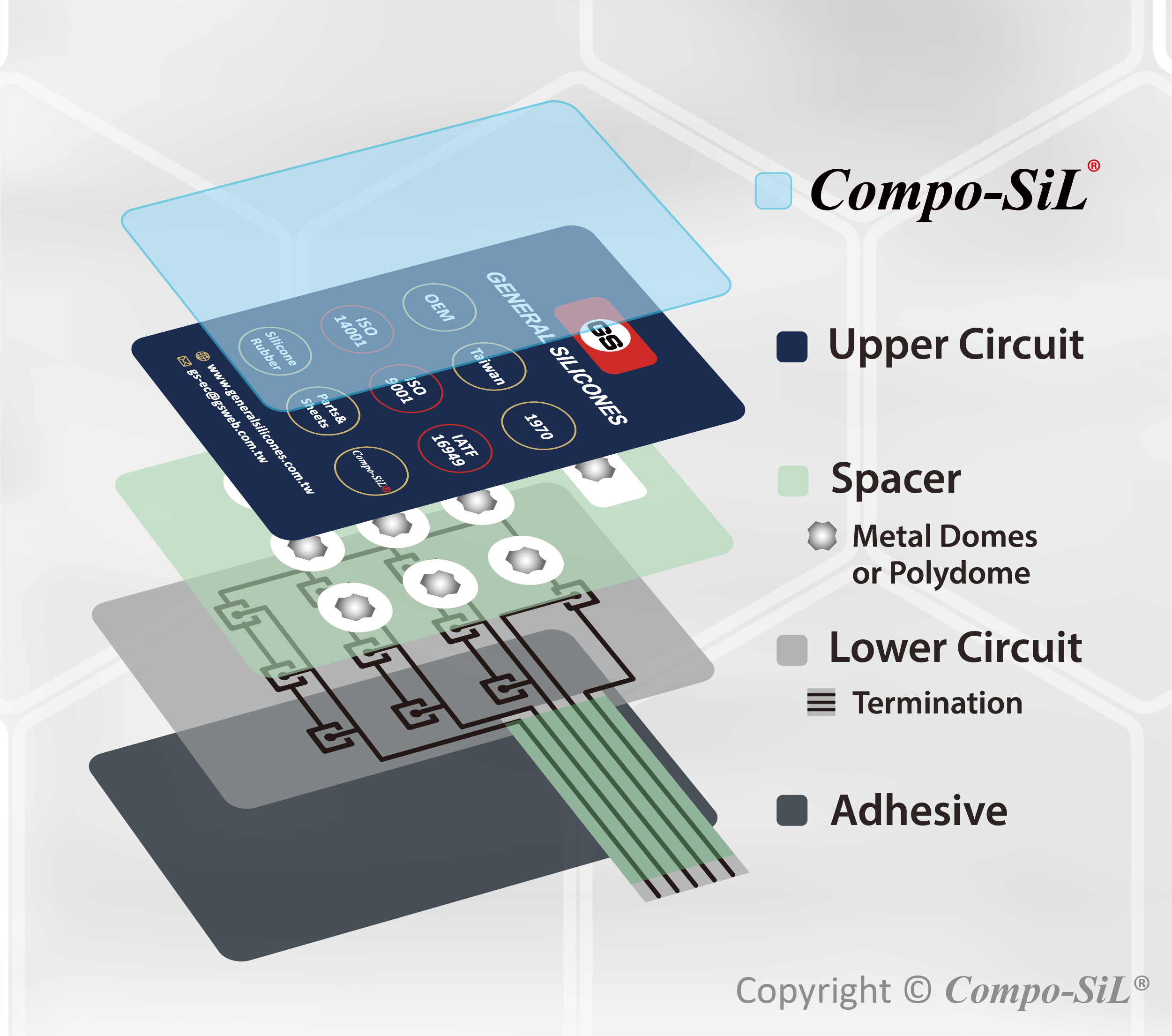Understanding the Relevance of Membrane Switches in Individual Interfaces
Membrane switches are essential elements in the layout of effective individual interfaces, assisting in not just functionality however likewise boosting visual appeal and individual communication. As we discover the future patterns and different benefits associated with Membrane technology, it comes to be clear that these buttons are much more than just elements; they stand for a merging of advancement and usefulness.
What Are Membrane Switches?

The spacer layer, which consists of sticky homes, enables the separation of the circuit layer from the overlay, making certain that the switch stays in a non-activated state until pushed. When pressure is put on the overlay, it presses the spacer layer, linking the void and finishing the circuit in the underlying layer. This style not just decreases the physical room required for standard mechanical buttons but additionally improves the toughness of the gadget, as Membrane buttons are typically immune to dirt, moisture, and various other environmental factors.
Generally discovered in applications ranging from customer electronics to clinical gadgets, Membrane buttons are essential to modern-day technology, providing a reliable and easy to use user interface that lines up with contemporary style requirements.
Benefits of Membrane Buttons
While various button technologies exist, Membrane Switches offer distinctive advantages that make them especially desirable in different applications. One of the main benefits of Membrane switches is their small layout, which enables space-saving executions in devices where genuine estate is restricted. Their thin profile not just enhances aesthetic allure but likewise promotes lightweight building.
An additional significant benefit is their resistance to ecological factors. Membrane buttons are commonly sealed against wetness, dirt, and contaminants, making them optimal for usage sought after environments, such as medical gadgets and commercial tools. This resilience prolongs the life expectancy of the button, reducing maintenance costs and improving dependability.
In addition, Membrane buttons can be customized to meet particular style demands, including one-of-a-kind graphics and shades that boost user interaction. Their tactile feedback options can also be tailored to offer a rewarding individual experience. Furthermore, Membrane switches are economical, specifically in high-volume applications, as they can be generated efficiently.
Applications in Numerous Industries

In the customer electronics field, Membrane switches prevail in tools such as microwaves, washing equipments, and push-button controls. Their tactile responses and aesthetic options boost user experience while giving a smooth, modern appearance. Additionally, auto producers utilize Membrane buttons in dashboard controls and infomercial systems, where area is restricted, and individual involvement is vital.
Moreover, the commercial sector leverages Membrane buttons in control panels for click for more info machinery and tools, enabling instinctive operation in commonly harsh settings. Their resistance to chemicals and moisture makes sure long life and reliability in these applications. On the whole, the adaptability of Membrane Switches contributes dramatically to their widespread usage, making them indispensable in different technical domain names.
Design Considerations for Membrane Buttons

When making Membrane switches, a number of crucial factors to consider must be considered to make sure ideal capability and customer experience. Firstly, the choice of materials is vital; choosing sturdy, high-quality substrates can enhance the switch's longevity and resistance to environmental elements such as moisture and temperature changes.
Second of all, the style of the graphic overlay ought to prioritize quality and convenience of usage. Symbols and text must be legible, and the layout needs to promote instinctive interaction (membrane switches). Additionally, tactile responses is crucial; including a tactile dome or other devices can improve the individual experience by offering physical confirmation of activation
An additional crucial element is the switch's electric performance. Designers have to make sure that the conductive traces are correctly designed to lessen resistance and prevent signal disturbance. This includes evaluating the called for actuation pressure and guaranteeing compatibility with the digital elements they will certainly user interface with.

Future Fads in Membrane Innovation
As technology proceeds to advance, Membrane buttons are poised to progress considerably, driven by technologies in materials and producing strategies. One emerging pattern is the incorporation of sophisticated products, such as adaptable substrates and conductive inks, which improve longevity and decrease the general weight of Membrane switches. These materials not just boost the tactile reaction however additionally permit the style of buttons that can hold up against harsher environmental conditions.
Moreover, the assimilation of touch-sensitive technologies is transforming standard Membrane Switches right into even more interactive user interfaces. Capacitive touch sensors embedded within Membrane button panels can supply an extra intuitive and responsive individual experience, lining up with the expanding need for streamlined, modern-day layouts in customer electronics.
Additionally, developments in printing techniques, such as digital and 3D printing, allow fast prototyping and personalization of Membrane switches. This versatility enables producers to respond quicker to market demands and consumer preferences.
Lastly, sustainability is becoming a significant focus, with manufacturers discovering eco-friendly products and procedures. As these patterns unfold, the future of Membrane technology assures boosted capability, visual charm, and environmental responsibility, strengthening their function in sophisticated user interfaces throughout different markets.
Conclusion
In final thought, Membrane Switches stand for an important part in the design of customer interfaces, combining capability with aesthetic versatility. As advancements in innovation proceed, the development of Membrane buttons is expected to more refine individual interfaces, driving technology and enhancing use in an increasingly complicated technical landscape.
Membrane switches are important parts in the design of efficient customer interfaces, facilitating not only performance yet also improving visual allure and user interaction.Membrane Switches offer as an essential component in different individual interfaces, promoting a seamless interaction between individuals and digital tools.While countless switch technologies exist, Membrane Switches offer unique advantages that make them especially preferable in numerous applications.In addition, Membrane buttons can be customized to meet particular design demands, integrating special graphics and shades that improve individual communication.In final thought, Membrane Switches represent an important element in the style of individual interfaces, integrating performance with aesthetic flexibility.
Comments on “Why Membrane Switches Are Gaining Popularity in the Automotive Industry”